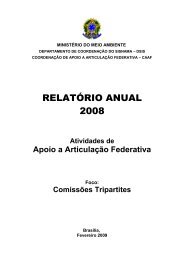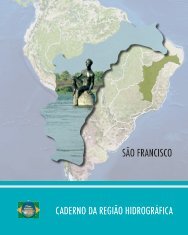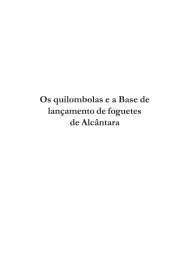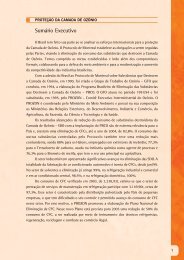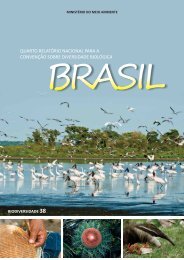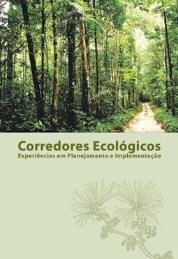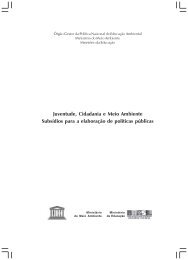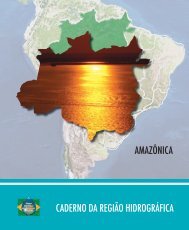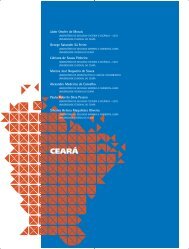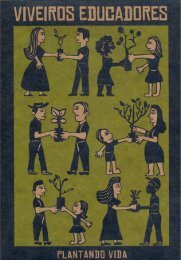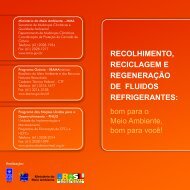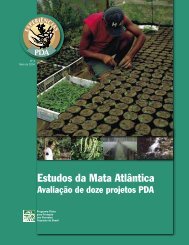Protected Areas
Protected Areas
Protected Areas
- No tags were found...
Create successful ePaper yourself
Turn your PDF publications into a flip-book with our unique Google optimized e-Paper software.
esources, environmental tourism,alternatives for fire control anddeforestation, environmental education,promotion of conservation – especiallyin private reserves, legal reservesand permanent preservation areas,management of natural resources andincome-generating incentives.Another way of contributing to theconnection of nucleus areas and to theformation of ecological corridors is bystimulating awareness of the PrivateNatural Heritage Reserves (ReservasParticulares do Patrimônio Natural– RPPN). The RPPN is an importanttool to complement the efforts of thepublic power toward the conservation ofnative ecosystems and natural resources.In the scope of the National <strong>Protected</strong>Area System, the RPPN presents highlypositive numbers in the cost-benefit rationboth as regards the economic resourcesthat are necessary for the creation andmanagement of a protected area site, aswell as the demand for technicians andacceleration of the process, due to itseasy regulations. The system allows forthe maintenance of connectivity amongfragments, as well as the increasedrepresentation of priority conservationareas in regions that are not sufficientlyprotectedby the network of publicprotected area sites.Protection of Biological Diversityon Indigenous LandsThere are 65 indigenous lands in theCCA, of which 37 are demarcated and28 are legally established. These landstotal more than 11,000,000 hectares(21.15% of the CCA) and are mainlydistributed in greater numbers alongthe Amazonas River. The greatestcoverage area, however, is in the regionof the Negro and Uatumã Rivers. Inthe scope of this sub-component, theDemonstrative Program for IndigenousPeoples (Programa Demonstrativo dosPovos Indígenas – PDPI) 3 it is responsiblefor the measures taken. The projects thatare supported contribute to the effort toconnect CCA areas by fostering protectionto indigenous lands, valuation of cultureand sustainable economic activities andthus ensure non-predatory exploitation ofresources.The challenge is to not only fosterenvironmental management onindigenous lands so as to improve thequality of life of the populations that liveon them, but instead to do this in anway that is integrated with the conceptof ecological corridors and to valuing thecultures within.3Also part of the Pilot Program for the Protection of Brazil’s Tropical Forests73



